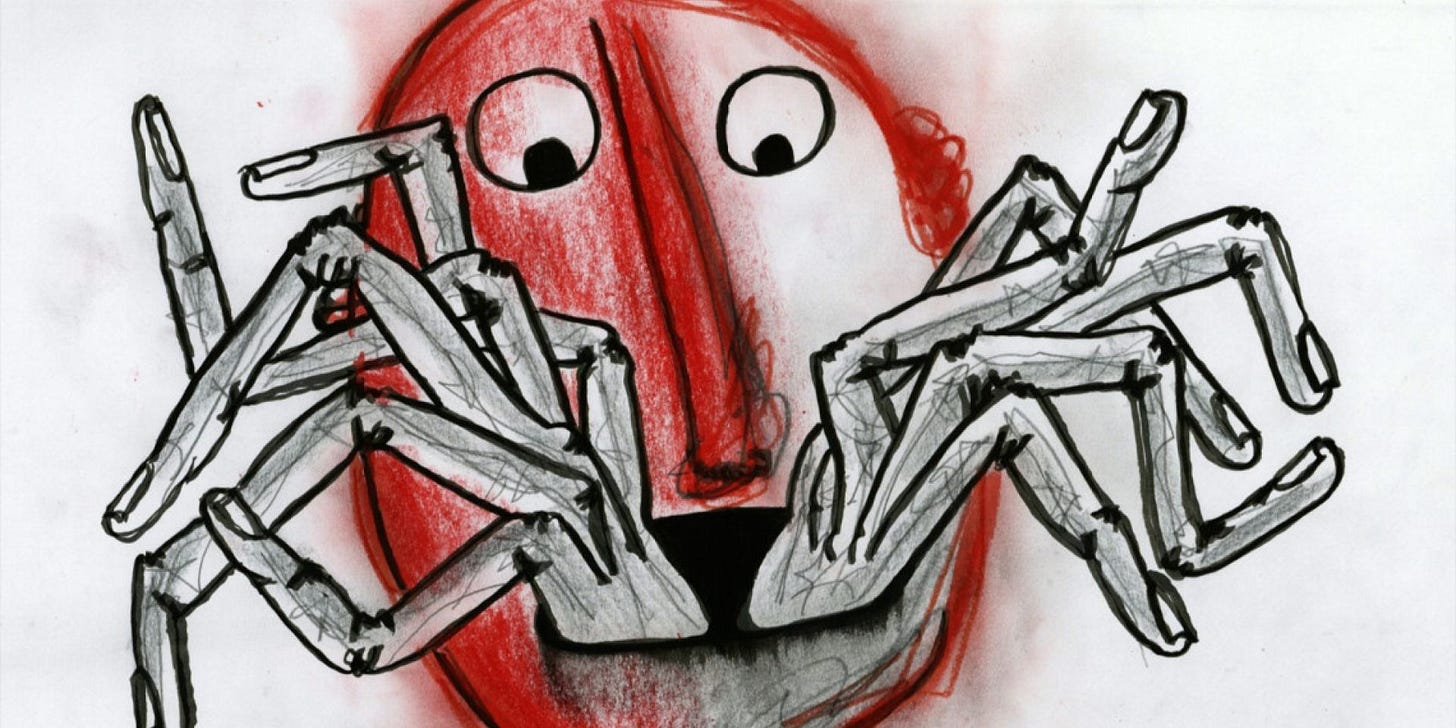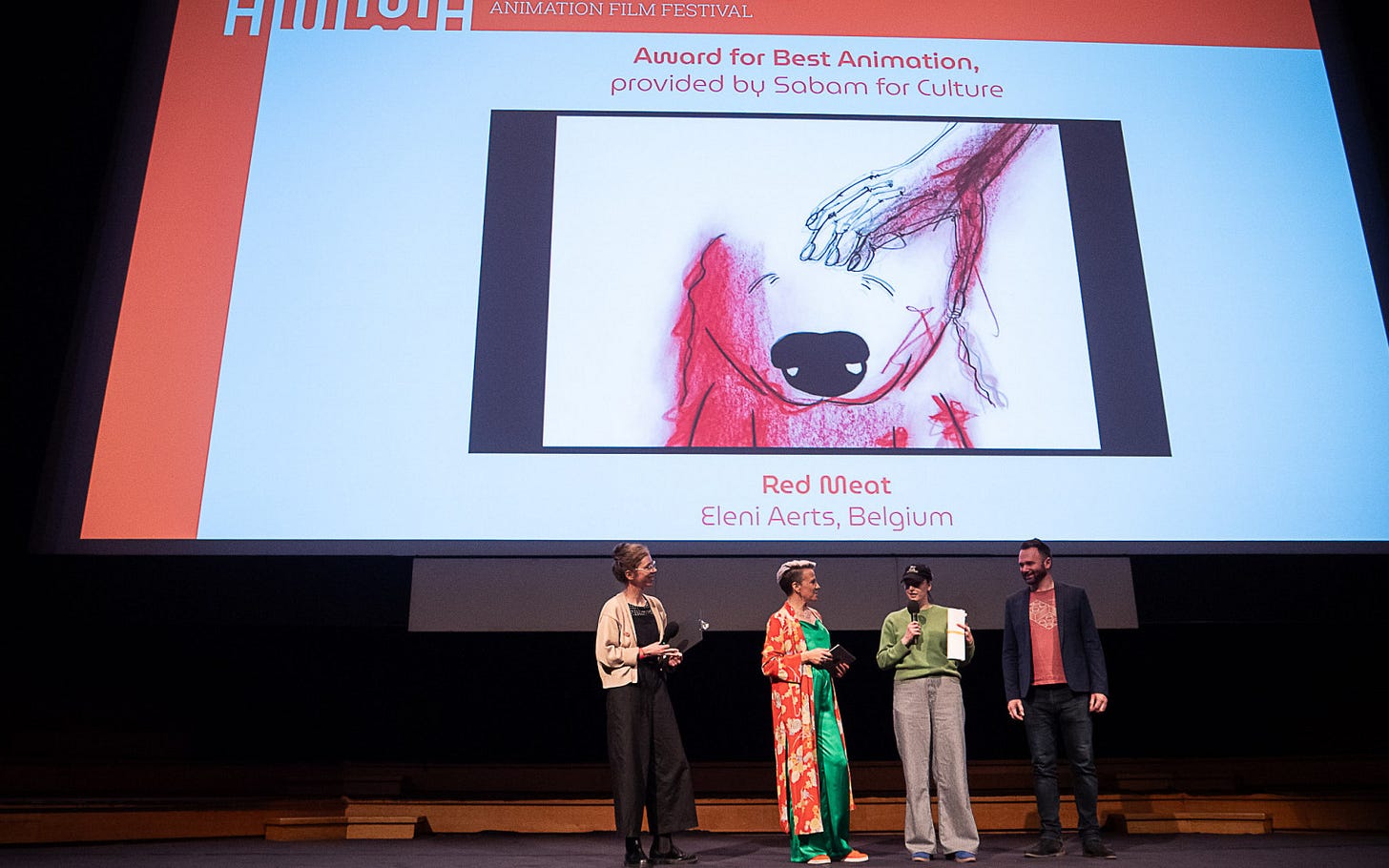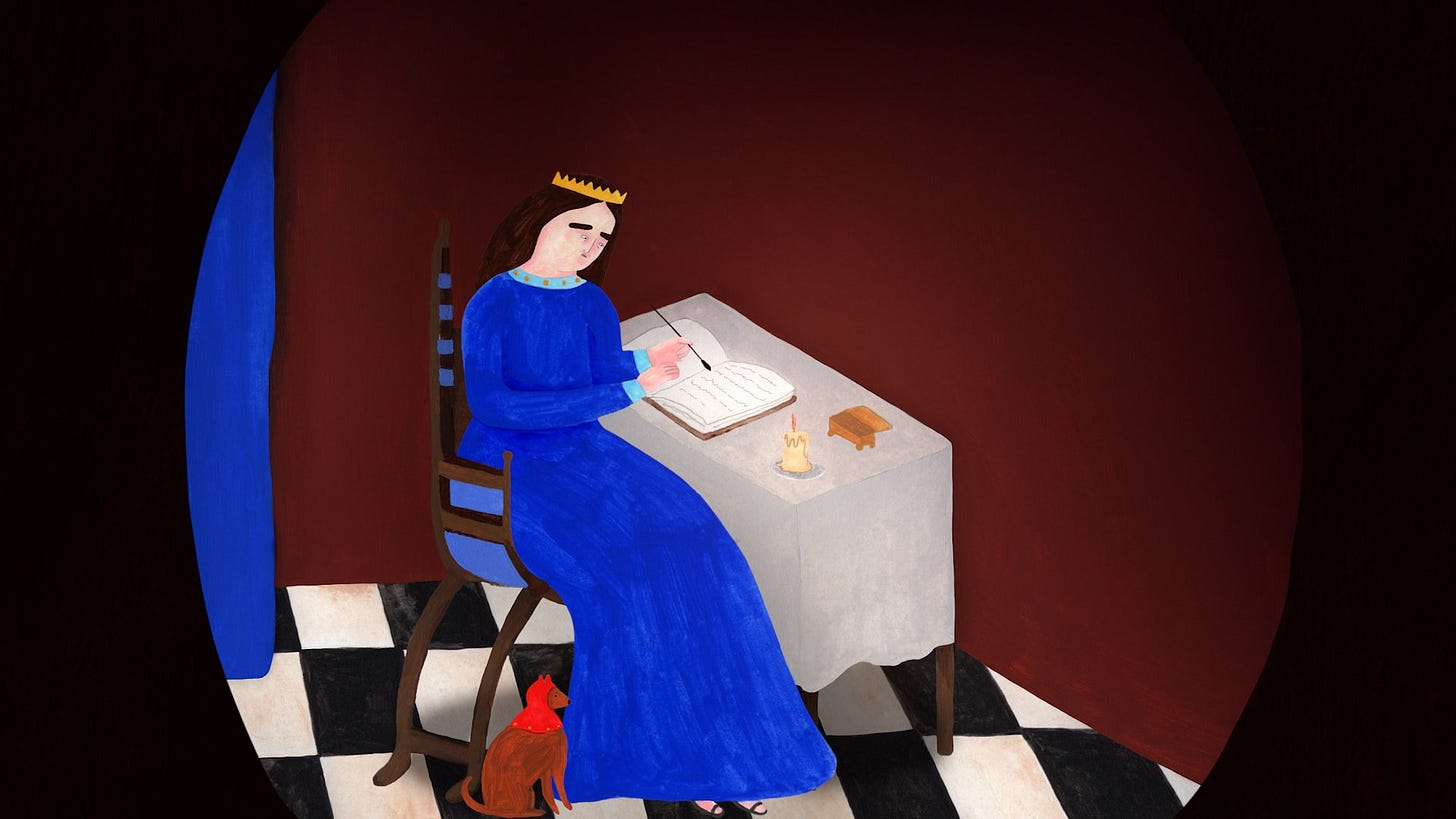Blood and Gold: Celebrated Flemish Shorts at Anima 2025
Interviews with Eleni Aerts and Anne Verbeure, two directors who were saluted during Anima this year.
This week, as the sun is shining on Brussels, let’s dive into the makings of two beautiful Belgian shorts.
Anne Verbeure, whose previous film Red Giant received critical acclaim during its long festival run, was back this year at Anima with her latest short, The Golden Donkey. A tender and captivating tale risen from the past to tackle modern feelings of displacement and loneliness, the film received the Author Award, provided by the SACD.
During the same night, a dazzled Eleni Aerts got called on stage to receive her Best Animation Award, provided by Sabam for Culture. Her film Red Meat, which already won the Best Student Film Award at Turku Animated Festival (Finland) conquered the jury with its raw, lively and punchy style, bathed in red tones and grim visual humor.
Speaking with the two directors, I wanted to know more about how these shorts came to life. In this newsletter, I’m happy to share those two interviews, which you will find below.
“I wanted to bring the poem’s strong emotions to screen” - interview with Eleni Aerts
What compelled you to share this story?
Eleni Aerts: During my third bachelor year, we had to choose a poem and translate it to animation. The one I chose, Fragments of Stesichorus, is an excerpt from Anne Carson’s Autobiography of Red. In that part Anne Carson took existing fragments about Geryon (a Greek myth) written by Greek poet Stesichorus, translated it and added her own twist to it.
I think the strength of a good book is that it can articulate emotions, feelings and experiences you couldn’t articulate on your own beforehand. And that is exactly what Anne Carson did for me, the poem was so honest, raw and visual that it spoke to me on such a personal level. So I had to use this poem to make an animation film.
At first it was scary because it felt like I was showing my soul to everyone. I had to convince myself that it was ok, to draw my raw emotion in a very graphical way. But then I started to realize that if the text spoke to me so deeply, other people could also benefit from hearing and seeing it in my film. It may sound cliché, but the text came to me at the right time and made me mentally more stable and reflect on my inner working. Even so, sending it to festivals to let a lot of people judge it was terrifying.
In Anima festival it was actually the first time I enjoyed watching it. I am so grateful I could tell this story, I call it more of a visualisation of emotions. And I hope other people can also benefit from it.
What were the challenges of bringing this poem to screen?
I didn’t want to make a literal translation of the poem to the screen, but I also didn’t want to stray too far away from it. For me the essence in the text was the strong emotions it evokes, so I started out with a literal translation to set the connection between the text and the images. The more the film progresses, the more I stray away from the literal poem and visualize more and more the emotions. That was not always easy because the text is written very visually.
A big challenge was finding the right voice actor. I first used drama students but their voice timbre didn’t blend with the music and the animation. Then my mother suggested that I use my father, Kim Aerts, and it worked perfectly. Luckily, my father is very patient, because I had a very specific vision for the way the voice over should sound, so we did a lot of recordings.
Another challenge was to make the film feel coherent and bring a tension arc in it. The poem exists out of different chapters that on their own have a little beginning and end, and I also didn’t want to lose those. That is why I kept the different chapters in there, without using them all due to a lack of time. I got a lot of feedback from other students and teachers that really helped me create a coherent story. I knew what I wanted to show in the film, and through talking to other people the film got more understandable. Even though it’s not a clear narrative and more of a visual feeling.
Can you elaborate on the technique you chose to create this short film?
I learned that I love using warped perspectives on characters during our model drawing lessons. During those lessons I liked to experiment with materials and how the body was positioned on the paper. The speed with which we had to make drawings, and get everything you wanted on paper, taught me to not hesitate and to just try it. So I implemented that when I was figuring out the technique of this film.
If you look closely at every scene, Geryon changes a lot. Not only through the perspectives, but also in the way I drew him. But because I used similar materials and colours, and implemented them in somewhat the same technique, it feels coherent. In the extreme perspectives there is also a lot of emotion, and I used them to emphasize different parts of the words. The messy materials also have an emphasizing effect on the painful emotions in the film.
A very important discovery in this film was through the edit. The very greasy textures of the materials were not moving on the screen the way I wanted to, so I just started trying different things out. I ended up placing the film a second time on top of itself but 2 frames further, and then putting it on 80% multiply. So all the colours and textures and movement blended more together. I think it’s also important to mention that the whole film (except for one shot) was made on one layer on paper.

How about the music and sounds, which play a big role in your project?
The whole film is centred around the rhythm I found in the poem. Everyday when I was walking to school, brushing my teeth, trying to sleep, I was reciting the poem aloud in my head trying to find the exact rhythm that felt right. I was very set on this rhythm, and my voice actor did a great job bringing my vision alive. On almost every word, I had a specific rhythm so it would portray the right emotion. On the rhythm of the text I also based the movement of the animation and my edit. And on the edit was the music made.
The music is composed by Frédérique Le Duc-Moreau, I met her at school. She brought the uncanny, painful feeling from the text to life through her music. I first animated and edited scenes and then I sent them to her, along with some notes on specific time codes that I wanted there, because I had given myself the rhythm of the poem as a starting point, and I wanted to keep that in the music. And it worked out perfectly. Frédérique made a masterpiece of a soundtrack.
What is “red” to you as an artist? What does this color represent?
In the first place, I chose red because of the title of the book and the film. Then I started using it, and next to the grey tones it was so powerful and it caught the eye. The color also has a powerful connotation of love, danger/pain. The two seem far from one another but through getting a grip on the poem and the rest of the book from Anne Carson, they seem so close to one another. So for me it’s an important color that signifies these opposites that lay so close together, and that is also felt in the book.
Altough I could not find a trailer for Red Meat, the film is still touring in festivals, and has been selected for Animafest Zagreb. Catch it there, or send a ping to Eleni on Instagram here if you’d like to discover this film.
“I love to write small characters with lots of insecurities against the magic of life” - interview with Anne Verbeure
What compelled you to write The Golden Donkey?
Three years ago during the summer months I immersed myself in the stories of medieval Bruges (my hometown) and the local book illuminations of around the 14th, 15th centuries.
I became obsessed with the beautiful compositions, use of color and humorous characters in these book illuminations, and almost immediately wanted to adopt them in my short film. It is during that time that I stumbled upon the story of ‘The golden donkey’ by Apuleius and multiple other variations of the medieval prince-turned-donkey stories, and also really wanted to incorporate them in the film.
These stories were so charming to me in their simplicity and at the same time their existential character. I love to write small characters with lots of insecurities and fears in contrast to the grandeur and the magic of life.
What were the challenges of bringing these aesthetics to screen?
I manually draw and paint the frames, which is a bit counter intuitive in our digital world. But I love the painted, “artisanal” effect of hand-drawn animations immensely. It adds an extra dimension of vibrancy to my previously flat figures. Each figure is scanned after painting, cut out frame by frame digitally and finally composed with the painted background.
The challenge of course was to paint all of these frames, especially the king, because I designed his outfit with several tints of red, which meant I had more to paint.
How did you approach the musical aspect of the film?
I initially wanted to make a musical, but it was too much work, so I had to drop this idea quickly.
But I still held on to the idea of having a lot of music, more specifically music dated from the Middle Ages. There are several medieval songs incorporated: ‘Aloeette, voghel clein’ from the 'Gruuthuse handschrift (14th century), or several songs from Guillaume de Machault (14th century). I wanted to create a separate feeling for the moment of crisis of the Glass King, so there composer Matthias Dewilde made a contemporary composition to evoke a beautiful, yet dangerous and emotional moment.
Your film is modern in its themes, yet draws from classic paintings. What did you want to convey with this dual perspective?
I love to work from reference material, make some historically correct decisions to depict a certain time period, but mainly my goal is to show how we, as people with all our existential complexities and funny mental quirks, are not that different from our medieval ancestors.
How has this film connected with audiences so far?
I’ve had some super nice comments on the film, especially during Anima!
I recognize that there’s a lot happening in the film, a lot to take on as a viewer, so I’m very happy when people just grab on to some elements in the film that make them happy or sad or weird.
If you want to discover Anne’s work, you can learn more on her website here and reach out to her on Instagram here.
Thank you for reading both interviews, I hope you enjoyed them and that you can’t wait to discover both films, and thank you Eleni and Anne for your time and captivating answers! Congratulations again!
I’ll keep you posted on where you can see them online in the future, and in the meantime, I hope you get the chance to catch up with them on a big screen.
Have a wonderful animated weekend,
Kevin











